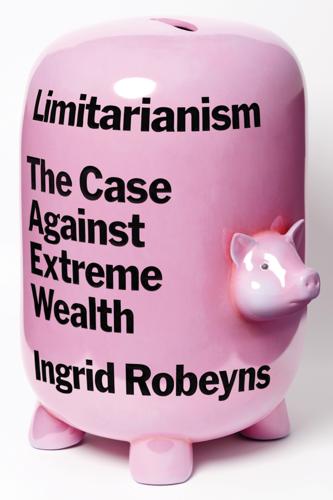
Limitarianism: The Case Against Extreme Wealth
by
Ingrid Robeyns
Published 16 Jan 2024
In almost all cases, rich and super-rich people should not have amassed so much money in the first place, and reparations for past harms—including tax evasion—are long overdue. Further, we’ve seen that extreme wealth concentration is a serious threat to democracy, in myriad ways. And the ceaseless drive to accrue more and more money is halting the green transition and driving climate disaster. But this wealth also has vast potential as a force for good: taken out of the hands of self-serving individuals, it could massively accelerate the green transition. How does this relate to our proposed limits on wealth? The political limit should be such that it cannot cause democratic harm. It is up to each political community to decide where that limit lies; I hold that ten million, in pounds, dollars, or euros, seems about right—low enough to make it too expensive to buy political influence.
…
We cannot afford to let these industries hoodwink us any longer as to the nature and consequences of their activities.21 Keeping the planet safe for humanity will require deep decarbonization and a fundamental economic transition—from production that is fossil-fuel based to production that is climate neutral. Otherwise, it will be impossible to stay within the remaining carbon budget. Yet this “green transition” will come with winners and losers. Overall, we have reason to believe that the green economy that should emerge from this transition will lead to much better, healthier, and happier lives for almost everyone when compared with the path we’re on right now. The super-rich might, perhaps, be able to buy their way out of disaster by hiring private firefighters in case wildfires threaten their homes, or by purchasing bunkers to retreat to when things get really bad, but that’s not an option for 99.99 percent of humanity.22 It will be a steep challenge to make a green economy a reality.
…
However, as George Monbiot argues in his book Regenesis, making such changes—which would also allow the entire world population to be fed—would require a transformation in the farming industry: we’re talking here about substituting the production of animal proteins and fats with the production of proteins from plants, fungi, and bacteria, with all the changes in practice, equipment, and supply chains that this implies. In other words, while there are changes that people at all income levels must make, we also need systemic reform. The way we produce food is just one example of a system that needs to change; for a green transition we need fundamental transformations in many other sectors too. For example, in the case of transport and mobility, we need to not only drastically reform the aviation industry, but also to move from private to shared cars, and to public transport and much better cycling infrastructure in most places.
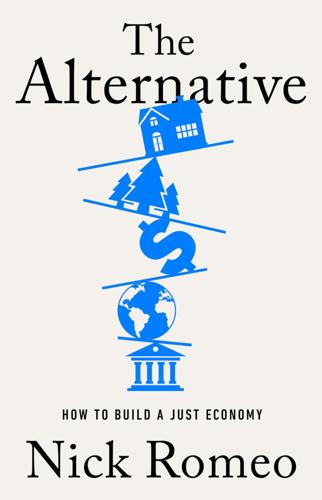
The Alternative: How to Build a Just Economy
by
Nick Romeo
Published 15 Jan 2024
“Investing for Impact: The Global Impact Investing Market 2020,” https://www.ifc.org/wps/wcm/connect/Publications_EXT_Content/IFC_External_Publication_Site/Publications_Listing_Page/impact-investing-market-2020. 40. Kristie Pladson, “Davos: Green Transition Is ‘$50-Trillion Opportunity,’” Deutsche Welle, January 28, 2021, https://www.dw.com/en/davos-green-transition-is-50-trillion-investment-opportunity/a-56375018. 41. Emily Flitter, “New Candidate for Top Bank Regulator Sees Risks in Crypto and Fintechs,” New York Times, August 5, 2021, https://www.nytimes.com/2021/08/05/business/occ-comptroller-Saule-Omarova.html. 42.
…
An intermediate option, with higher returns than Treasury bonds but with nearly as much security, would fill a gap in the portfolios of sovereign wealth funds, pension funds, and other institutional investors. These investors would also satisfy the growing demands from clients for ethical investment options while supporting the creation of high-quality jobs, essential infrastructure and manufacturing capacity, and a green economy. Estimates of the cost of a green transition vary, but one recent study found that $3.5 trillion of annual investment would be necessary to reach a net-zero economy by 2050.38 A 2020 estimate, meanwhile, sized the global impact investing market at only $2.3 trillion, less than $650 billion of which had any impact management system.39 The private sector alone is exceedingly unlikely to deploy sufficient quantities of capital or to do so in sufficiently strategic and coordinated ways to maximize the odds of reaching net zero.
…
But the guarantee of living wages could limit suffering and precarity. An expansion of the sort of job guarantee explored in Chapter 4 could mobilize large numbers of people to do socially necessary work—disaster recovery, community health outreach and caregiving, infrastructure renewal and green transition projects, and production and manufacturing to ease supply chain shortages. It would also benefit citizens’ mental health, which the COVID-19 pandemic and its attendant stresses have done much to erode. Setting the wages for a job guarantee at a generous level would motivate private-sector employers to improve their compensation even in the absence of living-wage legislation.

This Changes Everything: Capitalism vs. The Climate
by
Naomi Klein
Published 15 Sep 2014
There is little hope of bringing the fossil fuel companies onside to a green transition; the profits they stand to lose are simply too great. That is not the case, however, for the workers whose salaries are currently tied to fossil fuel extraction and combustion. What we know is this: trade unions can be counted on to fiercely protect jobs, however dirty, if these are the only jobs on offer. On the other hand, when workers in dirty sectors are offered good jobs in clean sectors (like the former autoworkers at the Silfab factory in Toronto), and are enlisted as active participants in a green transition, then progress can happen at lightning speed.
…
We could alternatively close our eyes, hope for the best, and pay the cost when the bill comes due.”56 If we had heeded this advice and got serious about meeting that goal immediately after the 1992 signing of the U.N. climate convention in Rio, the world would have needed to reduce its carbon emissions by about 2 percent per year until 2005.57 At that rate, wealthy countries could have much more comfortably started rolling out the technologies to replace fossil fuels, cutting carbon at home while helping to launch an ambitious green transition throughout the world. Since this was before the globalization juggernaut took hold, it would have created an opportunity for China and India and other fast-growing economies to battle poverty on low-carbon pathways. (Which was the stated goal of “sustainable development” as championed in Rio.)
…
Defenders of these trade deals argue that protections like Ontario’s buy-local provisions distort the free market and should be eliminated. Some green energy entrepreneurs (usually those that purchase their products from China) have made similar arguments, insisting that it doesn’t matter where solar panel and wind turbines are produced: the goal should be to get the cheapest products to the consumer so that the green transition can happen as quickly as possible. The biggest problem with these arguments is the notion that there is any free market in energy to be protected from distortion. Not only do fossil fuel companies receive $775 billion to $1 trillion in annual global subsidies, but they pay nothing for the privilege of treating our shared atmosphere as a free waste dump—a fact that has been described by the Stern Review on the Economics of Climate Change as “the greatest market failure the world has ever seen.”
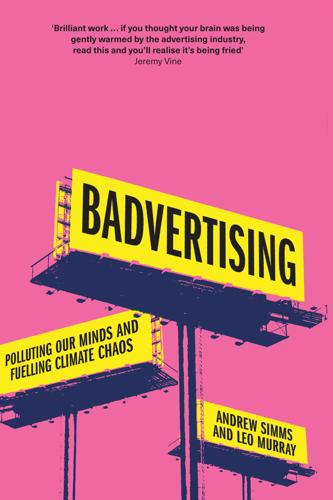
Badvertising
by
Andrew Simms
When the airline Lufthansa offered customers the promise of ‘carbon neutral’ flying, in line with the IATA plan, the Swedish Advertising Regulator, Reklamombudsmannen (RO), ruled that the advert was greenwash and that it ‘contains misleading claims about carbon neutrality’ and, as a result, ‘that an average consumer risks being misled about the climate impact of air travel’.47 In the Netherlands, climate campaigners Fossielvrij NL (Fossil Free NL) are in the process of suing Dutch airline KLM over their ‘Fly responsibly’ greenwashing ad campaign, with KLM’s lawyers making a claim that is familiar from tobacco companies before them that ‘KLM is advertising to people who will be flying anyway.’48 Legislators at the European Union are also finally stirring, with the EU’s Green Claims Directive and Empowering Consumers for the Green Transition file looking likely to lead to a ban on businesses claiming to be carbon neutral by virtue of their offsetting schemes, thanks to the inability of the scheme’s providers to substantiate their claimed emissions reductions.49 In the UK too, watchdogs are finally starting to take the problem of greenwashing seriously.
…
Guardian (2023) Revealed: more than 90% of rainforest carbon offsets by biggest certifier are worthless, analysis shows. 18 January. www.theguardian.com/environment/2023/jan/18/revealed-forest-carbon-offsets-biggest-provider-worthless-verra-aoe 84. Badvertising (2022) Caught offside with offsets? Why offsetting won’t solve sports’ climate problem. November. www.badverts.org/latest/briefing-why-offsets-wont-solve-sports-climate-problem 85. Euractive (2023) S&Ds lead major improvements in EU law empowering consumers for the green transition. 11 May. 86. Rapid Transition Alliance, Playing against the clock. 87. Ibid. 88. Rapid Transition Alliance (2020) An open goal for transition – will global sport follow the lead of a small English football club? 27 August. www.rapidtransition.org/stories/an-open-goal-for-transition-will-globalsport-follow-the-lead-of-a-small-english-football-club 89.
…
Ford Fiesta, SUVs Carbon Offsetting and Reduction Scheme for International Aviation (CORSIA) 144 carbon offsets 102−4, 142−4 Carmichael Coal Mine, Australia 166 Carnegie Mellon University, Decision Sciences Department 52 Carter, Jimmy 111 CCTV (closed circuit television) 36 Champions for Earth initiative 101 Channel One (US tv programme) 39−40 Chelsea FC 98 Chesterfield cigarettes 57, 63 Chevrolet Blazer cars 113, 118 Chevron Airline 155 children 8−9, 15, 17, 33, 39, 74 China 40 Cho, J.H. 46 Cho, Su Myat 48 chocolate cigarettes 63 cigarette advertising bans on 63, 71−82 bans on television advertising 56−7, 59 campaigns against 56−7, 185−7 cigarette coupons 63 cigarette smoking 31, 54−82 depiction in films 25, 48−9 and nicotine 77 substitutes for 64 Cipollone family: case against tobacco industry by 70 Citroen cars 129 Civil Aeronautics Board (US) 149 Civil Rights Act (US 1964) 148 Clarke, Kenneth 68, 72 Clean Development Mechanism (CDM) 142, 143 Clear Channel Outdoor Company 10 Clement-Jones, Lord Tim 78, 80 climate change 5, 15−16, 41, 83, 94−5, 101 Climate Change Act (2008) 151 Climate Change Committee 138, 151 Climeworks Company 143 Coca-Cola Company 22, 23 Code of Broadcast Advertising (BCAP) 158 Code of Non-Broadcast Advertising and Direct and Promotional Marketing (CAP) 158 colour 20−2 Columbus, Christopher 57 Committee on Public Information (CPI) 30 Competition and Markets Authority (CMA) 154−5, 157, 159, 178 Conservative government (Major) 72 (Thatcher) 65, 69 Conservative Party conference 22 consumer credit 3, 43−4 Consumer Federation of America 35 consumer neuroscience 52−3 consumer psychology 53, 121 consumerism 2−9, 44 Convention on International Civil Aviation 149 cookies 34 third-party cookies 36 Coolidge, Calvin 188 COP26 Conference 97, 165 Council for Tobacco Research (US) 61 Covid-19 pandemic 48, 91, 109, 125−6, 182, 193−4 impact on airline industry 152, 154 Cowling, Keith 45 Craigie, Jill 54−5 cricket 69, 84 Cruise, Tom 25 Culture Declares Emergency (group) 100 Culture Unstained (organisation) 99 Curtis, Adam 30 cycling 87−8, 89 Daedalus (myth) 135 Daily Mail 198 Daily Mile fitness programme 88 Daily Telegraph 198 Dawson, John 54, 66, 67 Dennison, Mary-Ann 148 Department of Health and Social Security (DHSS) 67, 72 Dobson, Frank 76 Doctors for Tobacco Law (organisation) 71 Dodge Durango cars 119 Dodge Ram trucks 114 Doll, Richard 55−6, 58 Doria, João 8 Dorrell, Stephen 73 Douglas-Home, Sir Alec 59 Dreiser, Theodore A Hoosier Holiday 115−6 Drope, Jeffrey 74 drought 94 DuckDuckGo (search engine) 196 e-fuels 137−8 Earth Overshoot Day 3−4 Easyjet Airline 150−1, 154, 163−4 advertisement 163ill slogan 13 Easyjet Future Flying programme 163−4 eavesdropping devices 36 Ecclestone, Bernie 76 Eddington, Paul 69 Edell, Marc 70 Edinburgh International Festival 195 Eisenhower, Dwight D. 109 electric vehicles 92, 129−30, 131 Emirates Airline 84−5, 96 slogan of 134 energy drinks 19 Ennals, David 64 Eshel, Gidon 46 Etihad Airline 155 European Advertising Standards Alliance (EASA) 167 European Commission 103 European Court of Justice 76 European Economic Community: dispute with US 111 European Parliament 104 European Union 79 Clean Claims Directive 155 Empowering Consumers for the Green Transition 155 Evangelical Environmental Network 129 Evening Standard 151 Exxon Valdez oil spill 128 ExxonMobil 77 Facebook 27, 32, 33 content moderators for 33 facial expressions 22 Febiac Federation 173 Federal Communications Commission (FCC) 24 Federal Trade Commission (FTC) 33−4, 49 Fédération Internationale de l’Automobile (FIA) 77 Fédération Internationale de Football Association (FIFA) 98, 102, 103 Ferrari Formula 1 cars 24 Fiat Chrysler Company 129 films: depiction of smoking in 25, 48−9 Financial Conduct Authority 178 Financial Times 75 fingerprinting 35, 36 Finland 93, 190 ban on tobacco advertising in 65, 75 Finnair airline 63 FIRES research programme 138 Fletcher, Charles 58−9 floods 94 food advertising: use of colour in 21 Foot, Michael 54−5, 58, 59−60, 67, 69 Forbes (magazine) 11 Ford, Bill 118 Ford, Edsell II: 112 Ford Explorer cars 112, 113, 117, 118, 124, 128 Ford Fiesta cars 107 Ford Model T cars 110, 118 Ford Motor Company: No Boundaries campaign 117−8 FOREST (campaign group) 62 Forest Green Rovers FC 104 Formula One racing 76, 77, 88 fossil fuels 77, 80−1, 97−8, 99−105 Foxley-Norris, Sir Christopher 62 fracking 88−9 France 173, 198 Jury de Déontologie Publicitaire 173 Résistance à l’Aggression (tv network) 11, 189 smoking ban in 79 Freiburg FC 104 Freud, Sigmund 29, 30 Frick, Vivian 51 Gahagan, Fritz 54 Galbraith, John Kenneth 160 The Affluent Society 16 The Great Crash 157 Gazprom Company 84, 97−9 football sponsorship by 98−9 General Motors Company 95−6 Geneva 193 George, Susan 192 Germany 11, 189 Deutsche Umwelthilfe (NGO) 11 Nazi era 30, 58, 116 smoking ban in 79 Werbefrei (organisation) 11, 189 Gillett, Lizzie xii Glantz, Stanton 49 Goebbels, Joseph 30 Global Financial Crisis (2008) 151 Global Footprint Network 3−4 Google 26, 27, 32 Gore, Al 24 graffiti art 7−8 Grahame, Kenneth The Wind in the Willows 116 Greenberg, Bradley 39−40 Greenpeace 99, 140, 172 greenwashing 85, 103, 155 Greenwood, Tony x Grenoble 194 Guardian 11, 144, 161 Gulf War (1990−91) 113 Gunster, Shane 123−4 Haarlem 189 Harris, Ralph, Baron of High Cross 62 Hauer, Ezra 121−2 Havard, John 66, 67 health campaigns 6, 60 Health Education Council 63, 68, 69 Red Book 68 Health Security Agency 131 Hidalgo, Anne 83, 102 High, Hugh 73−4 Hill, Austin Bradford 58 Hillary, Sir Edmund 127 Hind, Dan The Return of the Public 199, 200 Honda cars 120 House of Lords 176 Environment Committee 180 HSBC 71, 158, 165−7 advertisement 165ill Hubbard, Diane 125 Hühne, Matthias Airline Visual Identity 149 Hum Vee cars 113 Hummer cars 113, 114, 118, 126−7 hybrid vehicles 92 mild hybrid vehicles 130 Icarus (myth) 134ill, 135 Imperial Airways 146 advertisement 145ill Imperial Oil Company 81 ‘Review of Environmental Protection Activities for 1978-79’ 80 Impossible Hamster (film) xii India 194 Indian Premier League 94 induced demand 117 Ineos Company 84, 87−91, 97−8 Ineos Grenadiers cycling team 87, 89−90 Ineos Team UK 87, 105 Ineos Upstream Ltd 88 Infiniti QX4 cars 123 Inflation Reduction Act (US 2022) 5 Institute of Economic Affairs (IEA) 73, 75 internal combustion engine (ICE) 4−5, 92, 96 International Air Transport Association (IATA) 85−6, 142, 152 International Civil Aviation Organization 135, 144 Icarus mural 134ill International Energy Agency 138 International Olympic Committee (IOC) 93 International Ski and Snowboard Federation (FIS) 101 International Travel Association 142 Iran 194 Iraq war 151, 199 Ireland: smoking ban in 79 Jacobi, Derek 69 James I, King Counterblaste to Tobacco 57 Japanese car market 93, 114 Jardine Glanville Company 66 J.C.

Green Swans: The Coming Boom in Regenerative Capitalism
by
John Elkington
Published 6 Apr 2020
But in a report called Better Business, Better World,53 the Business & Sustainable Development Commission, which Oppenheim led, concluded that meeting the goals in just four out of sixty sectors (food and agriculture, cities, energy and materials, and health and well-being) could open up market opportunities worth up to $12 trillion a year by 2030. In a parallel initiative, the latest round of the Green Transition Scoreboard, operated by Hazel Henderson’s Ethical Markets,54 has concluded that there had been a cumulative investment of $10.39 trillion in things like clean energy, green construction, and plant-protein food between 2009 and 2019.55 One telling indicator of the shift was the public listing of Beyond Meat, whose shares skyrocketed 135% shortly after the listing, even though the meat alternatives company warned that it may never make a profit.56 In one of my favorite new sectors, producers of plant-based meat, chicken, egg, and fish substitutes are working toward true Green Swans—and maybe, with alternative fish products, what we might call “Blue Swans.”
…
Other examples •Outbreak of World War I; “Spanish flu” epidemic, 1918–1920; ecological impact of e.g., DDT; dissolution of the USSR for those living there; 9/11 attacks; the opioid crisis in the US; “The Great Hack”8; Brexit; “Insectageddon”9; spread of meat-based diets and fossil-powered cars across a growing global population; death of more than 500 million animals in Australian brushfires in 2019 •Impact of “Earthrise” image of our planet; rapid rise of environmentalism; restoration of Loess Plateau, China; rise of renewable energy; electric vehicles; green bonds; Denmark’s “Green Transition”; London declared a National Park City; development of plant-based alternatives to eggs, meat, poultry, and fish; Stanford University $73 trillion Green New Deal plan for 143 countries; EU €1 trillion Green Deal © Volans 2019 Figure 8: The Swanspotter’s Guide, 1.0 Clearly, this is very much a work in progress.
…
See also change process stages; Future-Fit change approach; technology allowing to flourish, 166 Anthropocenic route, taking, 230–234 antibiotics through lens of, 108 assets with characteristics of, 73 be a leader, not an algorithm, 223–230 Black Swans starting off as, 182 business models with characteristics of, 53 calories through lens of, 102 capitalism with characteristics of, 202–208 carbon economy through lens of, 111 defined, 9, 22, 167 democracy with characteristics of, 208–213 different thinking, need for, 23–27 early sharing of content about, 199–201 exponential leaders, 236–242 future, differing views of, 190–193 global grand challenges approach, 186–187 governance with characteristics of, 71 gradual, then sudden evolution of, 76 growth with characteristics of, 57–58 historical, 43 impact with characteristics of, 64 liability with characteristics of, 68 losing control, risk of, 193–197 materiality with characteristics of, 69–70 overview, 1–3, 22–23, 219–223 as parallel reality with Black Swans, 9–10 plastics through lens of, 97 profitability with characteristics of, 55 purpose with characteristics of, 50 push and pull in evolution of, 189–190 recent examples, 42 reinventing everything, 197–199 space junk through eyes of, 116 spotting, 254–256 sustainability with characteristics of, 213–218 systemic change overview, 201–202 three horizons, two scenarios, 2000-2100, 38–39 and triple bottom line concept, 12–13 U-bend, unclogging, 234–236 value with characteristics of, 61 Green Swans (film), 9–10, 248 Green Transition Scoreboard, 233 growth, 47, 55–58 The Guardian (newspaper), 96 H Haan, Nick, 200, 222 Hamid, Mohsin, 109, 110 Harvard Business Review (HBR), 32, 155–158 Haut, Sonja, 253 Hawken, Paul, 141, 142, 232 Hemingway, Ernest, 79 Hichens, Robert, 198–199 Hill-Landolt, Julian, 229–230 Hippocratic Oath, 108 Hoffman, Donald, 27 Hofstetter, Dominic, 220 Holocene epoch, 86 Honda, 135 horseshoe crabs, 231–232 How Adam Smith Can Change Your Life (Roberts), 80 The Human Planet (Lewis and Maslin), 29 Humanitarians, exponential leaders as, 238 humor, 120–121 Hunter, Sarah, 240 Hurd, Nick, 212–213 Hutton, Will, 196 Hwang Sang-ki, 126 Hyatt, John Wesley, 94 hydropower, 201 Hype Cycle, Gartner, 173–175 I Ibbitson, John, 222–223 Ignatius, Adi, 155–156 illusion of control, 44 impact, 47, 61–64, 256 impact investing, 63, 64 Impossible Foods, 233 incremental change, 34, 35f, 57, 233–234 India, 82 Indonesia, 220–221 industrial revolutions, 175–176 industry federations and associations, 132 inflated expectations, in Gartner Hype Cycle, 174 influencing activities, 145–146 information, role in economy, 190, 192 Innovation Trigger stage, Gartner Hype Cycle, 174 innovations, in three horizons framework, 38–39 Innovators, exponential leaders as, 238 Institute for Energy Economics and Financial Analysis, 242 Institute for Transformative Technologies (ITT), 184–185 insulin, 156–157 insurance industry, 136–137 intangible assets, 72 integrated business models, 52 Interface, 142 intergenerational transfer of wealth, 201 International Accounting Standards Board, 58 International Finance Corporation, 119 international OTA, need for, 183, 185 International Renewable Energy Agency (IRENA), 133 International Space Station (ISS), 111 internet, 173, 175, 192 Internet of Things (IoT), 177 investors/investing, 63, 64, 162, 205–208, 242–244 invisible hand, 18, 25, 85 Ipsos, 219 Israel, 171 Ive, Jony, 213–214 Iversen, Torben, 212 ivory, 93 J Jackson, Clive, 245–246 Jackson, Tim, 56 Jakarta, Indonesia, 220–221 Japan, 135 Johnson, Nicholas, 113 Johnson & Johnson, 13 Johnson County, Indiana, 126–127 joint and several liability, 66 Jørgensen, Lars Fruergaard, 158–159 journalists, 227 JPMorgan, 142–143 Just, Inc., 233 JWT, 140–141 K Kahneman, Daniel, 204 Kaiser Permanente, 255 Kelly, Kevin, 36 Kelly, Marjorie, 205 Kendall, Geoff, 159–164 Kerr, Andrew, 201 Kessler, Donald, 112 Kingston, Phil, 189 Klee, Louis, 109 Klimenko, Svetlana, 207–208 Kondratiev, Nikolai, 203 Kramer, Mark, 59 Kuhn, Thomas, 41, 121–122, 123, 191, 230 L Langer, Ellen, 44 Lawrence Berkeley National Lab, 184–185 Layton, David, 190–191 leaded gasoline, 172 leaders, 223–230, 236–242.

Homeland: The War on Terror in American Life
by
Richard Beck
Published 2 Sep 2024
In early 2023, The New York Times published a guest op-ed by an analyst claiming that war between the United States and China is now more likely than at any time since World War II,[15] and a four-star general with the Air Force predicted that war would begin in 2025.[16] Such a war would not only be devastating in terms of the immediate human and social costs. Another area in which China and the United States now find themselves at odds is the green transition, the complex of raw materials, manufactured goods, and energy distribution systems that will be required to move the world economy away from fossil fuels. The world is already well behind the reductions in carbon emissions that would be required to keep global warming at or below 1.5 degrees Celsius.
…
To retain even the slightest hope of meeting that target, drastic action and close cooperation among all of the world’s industrial powers are required, starting immediately. Together, China and the United States account for more than 40 percent of global carbon emissions, and China controls a high percentage of the raw materials required for the manufacture of crucial green-transition technologies, such as lithium-ion batteries. Should China retaliate against Biden’s semiconductor export controls by imposing restrictions of its own on materials such as lithium, nickel sulfate, synthetic graphite, cobalt, and manganese—and as of November 2023 the Chinese government has announced policies to reduce exports of graphite—it will further slow a transition that is already hopelessly behind schedule.
…
With the United States posting strong GDP growth figures in 2021 and avoiding a recession entirely in 2023 despite the challenges posed by high inflation, it can be tempting to believe that the COVID-19 crisis inadvertently helped America to crack the code of twenty-first-century economic success: revitalized industrial policy focused on tech and renewable energy, tight labor markets, and monetary policy that keeps a firm hand on the reins of an economic expansion without panicking and driving interest rates high enough to stop that expansion in its tracks. That conclusion, however, would be premature, because the central issues that have driven America’s economic decline since the 1970s remain unresolved. Manufacturing overcapacity around the world is already causing difficulties for the green transition, with China’s mammoth investments into electric vehicle production threatening to lower profitability for other manufacturers and discourage investment. The United States economy also remains dangerously reliant on asset price inflation, with home prices and rents increasing dramatically since the bottom of the 2020 downturn and the stock market overly reliant on a tiny handful of tech industry giants.
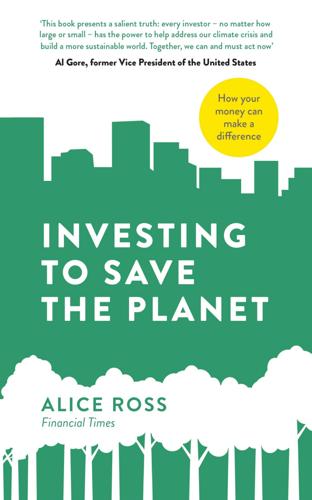
Investing to Save the Planet: How Your Money Can Make a Difference
by
Alice Ross
Published 19 Nov 2020
But attention also turned to how governments could use stimulus packages to ‘Build Back Better’ – by putting sustainability and climate change at the heart of plans to revive their economies. The United Nations used Earth Day on 22 April to call on governments to do precisely this, arguing that the huge amounts of money spent on recovering from the coronavirus should deliver new jobs and businesses through a clean, green transition. In addition, the UN said, where taxpayers’ money had been used to save companies from going bust, it should be tied to achieving green jobs and sustainable growth. Public funds should flow to sustainable sectors and projects that help the environment and the climate, while fossil fuel subsidies should end.
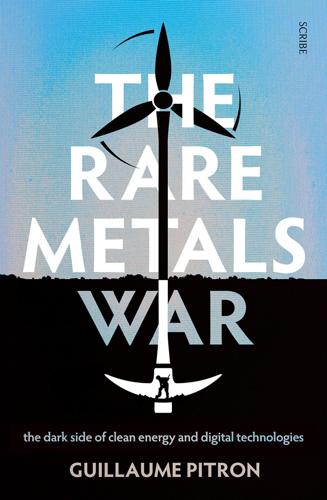
The Rare Metals War
by
Guillaume Pitron
Published 15 Feb 2020
This bears repeating: over the next generation, we will consume more minerals than in the last 70,000 years, or five hundred generations before us. Our 7.5 billion contemporaries will absorb more mineral resources than the 108 billion humans who have walked the Earth to date.8 Vidal admits that the study is incomplete: assessing the actual ecological footprint of the green transition requires a far more holistic approach that includes the life cycle of raw materials. It also requires measuring the staggering volumes of water consumed by the mining industry, the carbon dioxide emissions produced by the transportation, storage, and use of energy, the still little-known impact of recycling green technologies, and all the ways in which these activities pollute ecosystems — not to mention the extent of their impact on biodiversity.

The Iceberg
by
Marion Coutts
Yet we are never presented with sites that might hold a theoretical explosion or contain its profound impact: the dissolution of the floor, folding in of doors and walls, sudden drops in pressure, the creation of a vacuum, the appearance of a void. So all our news, great and terrible, is imparted in liminal spaces. In between. I can name them: the telephone, a pale green transit room opening out on two sides on to adjoining clinics, a swing door, a tiny office crammed with chairs, computers, files and a shredder. This last had a door that could be shut, so it counts at least as a room. After the removal of the staples and a further half hour waiting, this is where Tom and I; Mr K, the surgeon; and Charlie, the charge nurse meet so that Mr K can give us the biopsy results.

The Iceberg: A Memoir
by
Marion Coutts
Published 2 Jul 2014
Yet we are never presented with sites that might hold a theoretical explosion or contain its profound impact: the dissolution of the floor, folding in of doors and walls, sudden drops in pressure, the creation of a vacuum, the appearance of a void. So all our news, great and terrible, is imparted in liminal spaces. In between. I can name them: the telephone, a pale green transit room opening out on two sides on to adjoining clinics, a swing door, a tiny office crammed with chairs, computers, files and a shredder. This last had a door that could be shut, so it counts at least as a room. After the removal of the staples and a further half hour waiting, this is where Tom and I; Mr K, the surgeon; and Charlie, the charge nurse meet so that Mr K can give us the biopsy results.

Other Pandemic: How QAnon Contaminated the World
by
James Ball
Published 19 Jul 2023
Curious as to what it must feel like to find your organisation accused of orchestrating world affairs, and be deluged by people across the world, I asked Adrian Monck,24 the WEF’s managing director for public and social engagement, what the experience had been like – and why a provocative title like Covid-19: The Great Reset had been chosen in the first place. ‘Covid-19: The Great Reset grew out of previous work on financing the green transition,’ he says. ‘Not necessarily the most exciting of topics, but nonetheless an important one. It was an attempt to encourage leaders – and the public – not to lose sight of issues like climate change, but also technology innovation and inequality. As a book it’s actually been pretty popular.’ The trouble for the WEF actually started on ultra-conservative Catholic blogs and Facebook pages, Monck says.
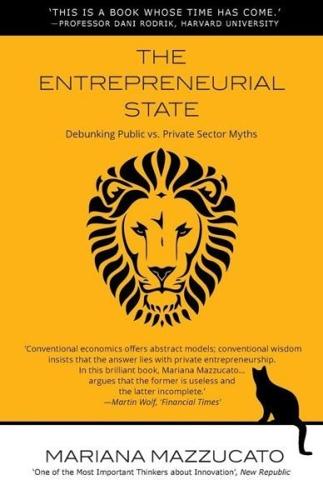
The Entrepreneurial State: Debunking Public vs. Private Sector Myths
by
Mariana Mazzucato
Published 1 Jan 2011
‘me too’ 64–7; see also pharmaceutical companies (‘pharma’); specific drugs Duhigg, Charles 173–4 DuPont 178–9 economic crisis: boosting clean technologies 142–3; causes of 12, 182; public sector blamed for 15, 17; varied impact of in EU 41 Economist, view on State and enterprise 16 ‘ecosystems’: see innovation ecosystems electric cars/vehicles 108, 123, 124, 133 Electric Power Research Institute (EPRI) 151 Elias, John 102–3 email 104 End of Laissez Faire, The (Keynes) 4, 194 endogenous growth theory: see ‘new growth’ theory energy crisis 137, 144–5; see also green industrial revolution Energy Frontier Research Centers (EFRCs) 133 Enron 148 ‘enterprise zones’ 54 ‘entrepreneurial’ State: building of 54, 196–7; growth and inequality in 183; risk assumption and vision of 24; role of 6, 10, 21, 23; see also State Entrepreneurial State, The (report) 2, 3 entrepreneurs: DARPA’s brokering role with 77; financing of 57; investment choices of 136; myth of in Silicon Valley 63; risk types and 58–9; SBIR funding to 80, 188 EPA (Environmental Protection Agency) 150 equitable growth 13, 177, 185 European Organization for Nuclear Research (CERN) 101 ‘European Paradox’ 53 European Union: approach to green initiatives 124; ‘Big State’ behind innovation in 166; feed-in tariffs in 153; ‘fiscal compact’ of 42, 197; green transition targets in 115n2; gross R&D spending as percentage of GDP 43; growth producing spending in 196; investment in renewable energy 120, 121; public sectors in 17–18; R&D targets of 41; weaknesses of countries in 52–3 Evans, Peter 4 Evergreen Solar 151–2, 162 Evolutionary Theory of Economic Change, An (Nelson and Winter) 34–5 ‘evolutionary theory’ of production 34–5 ‘exogenous growth theory’ 34 externalities 4, 7, 21, 168; see also Apple Fadell, Tony 100n8; see also Apple Fairchild Semiconductor 76 fast Fourier transform (FDT) algorithm 109 feed-in tariffs: in energy technology 114; in European markets 153; German 122, 138, 149, 156; policy changes in 125n7; UK 124 Fert, Albert 96 Fiegerman, Seth 171n3 finance firms 182 financialization 25–8 FingerWorks 103 Finland 120n4, 121, 190 First Solar (formerly Solar Cells Inc.) 128–9, 151, 159–60; see also green industrial revolution Fiscal Investment Loan Program (Japan) 40 flat panel display (FPD) industry 106 Florida, Richard 107 Forbes on WuxiSuntech 153 ‘Fordist’ model of production in 38–9 Foxconn 170–71 France 61, 120, 120n4, 121 Freeman, Chris 193 Fuchs, Erica 133 Funding a Revolution: Government Support for Computing Research 63 G4S, security company 16 game theory 36 GDP, balance in categories of 30 Gedser turbine 145 Genentech Inc. 57, 69, 81 General Electric (GE) 125, 137, 147–8, 160–61, 174n5 general purpose technologies (GPTs) 62, 83 Genzyme 81, 181 Germany: feed-in tariffs 122, 138, 149, 156; government energy R&D spending 121; green revolution in 115n2, 116, 120, 122; long-term support provided by 158; public R&D spending in 61, 144–6; solar resources of 144; State investment bank 190; systems of innovation in 37; wind energy and R&D projects in 144–6, 149, 156 Ghosh, Shikhar 127 giant magnetoresistance (GMR) 96–7 GlaxoSmithKline 66–7, 82 Global Wind Energy Council (GWEC) 138–9 Goldwind 149 Goodenough, John B. 108 Google 20, 174–5 government energy R&D spending 121, 121 GPS (global positioning system) 105, 105n12 Great Transformation, The (Polanyi) 194–5 Greece, R&D/GDP 52 Green, Martin 152 green industrial revolution: ARPA-E 133–5; ‘carbon lock-in’ 117; China’s ‘green’ 5 year plan 122–4; climate change 117, 123, 135; development banks funding of 139–40, 139n14; DoE role in 132–3; Economist on 16; financial commitment for 116; funding of 116–19; global new investment in renewable energy 120; government energy R&D spending 121; government support to 114–15, 119, 129, 141–2; hurdles to 138, 156, 160; leaders in 11–12, 126; national approaches to 119–22; ‘No More Solyndras Act’ 130–31n12; patient capital 138–40; policies impacting 113–15, 119; pushing green development 136–7; renewable energy credits (RECs) 115n1; smart grid technology in 115, 118; sustainability 117, 119, 123; UK’s approach to 124–6; US approach to 126–35; venture capital in 127–9, 128n9; venture capital subsectors in 128; see also clean technology; solar power; wind power Green Investment Bank 125n7 Gronet, Chris 151 growth: economy-wide 62; effect of venture capital on 49; of firms and R&D benefit 44; firm size relationship to 45–6; ‘inclusive’ 167, 183, 195; inequality and 31, 54, 177; innovation as key source of 9, 177; measures of 33; myths about innovation and 10; national debt relationship to 18; ‘smart’ 167, 183; and technology 33–4; theories of 33–4; variables important for 18; see also equitable growth Grünberg, Peter 96, 97 Grunwald, Michael 113, 136 Haltiwanger, J 45 Hamilton, Alexander 73 Hanwha Group 157 hard disk drives (HDD) 96–7, 109 Harrison, Brian 154 Harrod, Roy F. 33 Haslam, Karen 171n3 Heymann, Matthias 145 Hoffman Electronics 150, 150n4 Hopkins, Matt 129n10, 160 House of Commons Energy and Climate Change Committee 125 Hsieh, Chang-Tai 46 HTTP/HTML 103–5, 109 Hughes, Alan 45 Hurst, Samuel 101 IBM 50, 97, 104, 107 ‘iGesture Numpad’ 103 Ill Fares the Land (Judt) 1 Immelt, Jeffrey 126 income-contingent loans and equity 189–90 income distribution 30n1 India 45–6, 120 industrial policy: challenges to 13; decentralized 78; in ‘rebalancing’ of economies 27; recent US history of 10, 21; redistributive tools needed in 167; State led 40; see also ‘picking winners’ inequality: as debilitating economic issue 177; growth impacted by 31; reducing 166, 186; shareholders as source of 183; tax cut impact on 54 information and communications technology (ICT) 50, 118 Information Processing Techniques Office (DARPA’s) 76 Innovalight 158 innovation: collective character of 183–7, 193; ‘culture’ of 87; as cumulative 167, 187; Death Valley stage of 47, 48, 122; development banks fostering 139–40; development of 3, 41–2; and distribution 186; economic growth driven by 9; firms resisting pressure for 77; global process of 155; government support for 31; in Japan 37–8; macro models on 44; myths about 10, 22; myths of R&D being about 44; ‘open innovation’ model of 25, 27; patent increase relationship to 50–51; process in energy technology 114; Schumpeterian innovation economics 5; State as a force in 5, 166; State leading in risky 62–4; stock market speculation and 49–50; tax policy impact on 51; threatened in US 24; undermining of in US 53, 183, 187; US 24; see also ‘systems of innovation’ approach innovation ecosystems: cumulative innovation curve in 167–8; open systems 193; socioeconomic prosperity dependence on 179; symbiotic vs. parasitic 23–5, 155, 162–3, 179; types of 2; see also actors ‘innovation fund’ 189 innovation networks 36, 40 innovation policy 22–3, 44, 46, 54, 167 Inquiry into the Nature and Causes of the Wealth of Nations, An (Smith) 1; see also ‘Invisible Hand’ Institute for Fiscal Studies (IFS) 51–2 institutional change, assessment of 36 integrated circuits 98, 98n6 Intel 130n11 intellectual property protection 110 intellectual property rights 174 International Bank for Reconstruction and Development (IBRD) 5 Internet: Apple’s use of 109; commercialization of 22; DARPA’s role in 76; and HTTP/HTML 103–5, 109; origin of 63; public funding behind 105 interventionist policy 83 investment returns, social vs. private 3–4 ‘Invisible Hand’ 30 iOS mobile operating system 89–90 iPad 102, 105, 109, 111n14 iPhone 101–3, 105–6, 109 iPlayer 16 iPod 95–6, 100–102, 105, 109, 110 Ireland 120n4, 121, 121 IRS 529 plans 111, 111n15 Italy 17, 39, 41, 52, 121 Jacobs 149 Janeway, William H. 49–50 Japan: Apple entering market of 110; computer electronics competition by 97, 98, 98n7, 106–7; economic growth of 37–8; finance system coordination by 40; flat panel display (FPD) industry of 106; government energy R&D spending 121; lithium-ion battery perfection by 108; MITI 37–8, 40; public R&D spending in 61; systems of innovation in vs.
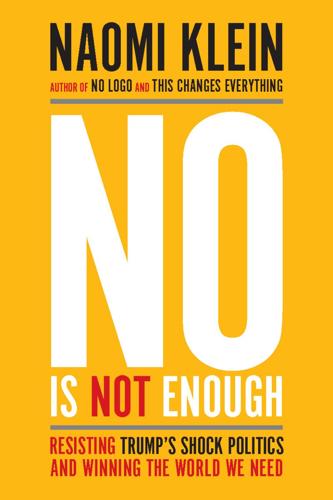
No Is Not Enough: Resisting Trump’s Shock Politics and Winning the World We Need
by
Naomi Klein
Published 12 Jun 2017
In other words, austerity and privatization as usual. But instead of fighting for the best deal they can get under this failed logic, they worked with The Leap team and a group called Friends of Public Services to put together a visionary plan for every post office in the country to become a local hub for the green transition. Combined with the union’s long-standing demand for postal banking, the proposal, called “Delivering Community Power,” reimagines the post office as a twenty-first-century network where residents can recharge electric vehicles; individuals and businesses can do an end run around the big banks and get a loan to start an energy co-op; and postal workers do more than deliver the mail—they also deliver locally grown produce and check in on the elderly.

MegaThreats: Ten Dangerous Trends That Imperil Our Future, and How to Survive Them
by
Nouriel Roubini
Published 17 Oct 2022
Energy Information Administration disclosed in March 2022.48 Energy prices in the Goldman Sachs Commodities Index soared almost 60 percent in 2021 as supply lagged behind demand.49 Pressure on institutional investors from eco-minded shareholders has slashed investment in new fossil fuel projects by 40 percent, according to one estimate. Production of renewables has increased but not fast enough. Surging energy demand after the end of the COVID-19 recession drove price increases and even energy shortfalls in China, India and the United Kingdom. A green transition also requires copper, aluminum, lithium, and other vital raw materials. Mining and processing them requires energy that fossil fuels produce. If current policies raise the price for fossil fuels we may end up with “greenflation.” Simply put: There is no free lunch in the transition to green energy.
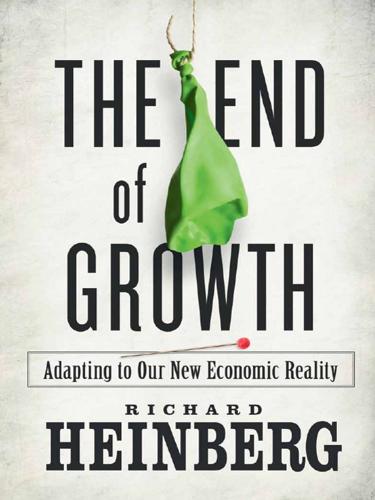
The End of Growth: Adapting to Our New Economic Reality
by
Richard Heinberg
Published 1 Jun 2011
Yet we all can still grow in wisdom and continue expanding the knowledge of our universe, while growing greener technologies capturing the sun’s daily free photon flow as we transition to the Solar Age. — HAZEL HENDERSON, author, The Politics of the Solar Age (1981) and other books, President of Ethical Markets Media (USA and Brazil) and its Green Transition Scoreboard® Dig into this book! It is crammed full of ideas, information and perspective on where our troubled world is headed—a Baedeker for the perplexed, and that’s most of us. — JAMES GUSTAVE SPETH, author of The Bridge at the Edge of the World: Capitalism, the Environment and Crossing from Crisis to Sustainability Read this book and have the light switched on
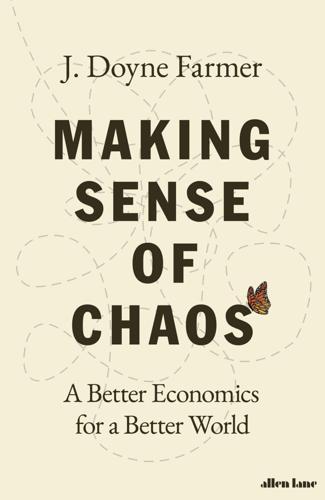
Making Sense of Chaos: A Better Economics for a Better World
by
J. Doyne Farmer
Published 24 Apr 2024
This module tracks the inputs and outputs of each firm and each industry, and the products they make, through time. Our goal is to do this precisely – that is, the firms will be recognizable companies, realistically headquartered in specific countries. This module allows us to envision possible scenarios for the green transition in great detail, as well as to track carbon emissions comprehensively and accurately.9 The Energy Systems Module provides detailed techno-economic predictions about the costs of decarbonizing energy producers and energy-using industries, recommending the technology-investment portfolio likely to be most cost-effective for making the transition.

The Future Is Asian
by
Parag Khanna
Published 5 Feb 2019
For the 250 million Indians who still lack electricity or suffer from power outages during summer heat waves, the government is accelerating new solar-power and biomass projects. The sooner China and India transition to alternative energy, the less fossil fuel they will import from West Asia. As oil and gas prices decline, therefore, Asia’s largest energy producers are themselves accelerating their green transitions so that they can maximize their export revenues and spend less on domestic fuel subsidies they can no longer afford. With funding from Japan’s SoftBank, Saudi Arabia and the UAE are investing in carbon-neutral eco-cities and 200-gigawatt solar farms. China and Malaysia have together captured two-thirds of the global solar panel market, reducing the price of production by 90 percent.
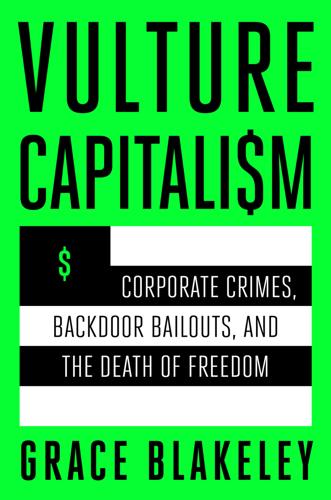
Vulture Capitalism: Corporate Crimes, Backdoor Bailouts, and the Death of Freedom
by
Grace Blakeley
Published 11 Mar 2024
In Germany, for example, the largest union has been campaigning for the introduction of a four-day workweek, based on evidence that doing so would boost productivity and employment while improving living standards. In both the US and the UK, a network of unions mobilized behind proposals for the Green New Deal, working tirelessly against fossil-fuel lobbyists attempting to convince workers that the green transition could cost them their jobs. But unions are just one part of the broad and deep coalition that we’ll need to win a more democratic economy. Community organizing will also be critical. The examples of community-led democratic planning in the previous chapter are important not only because they provide a different way of organizing the economy but also because they help inspire people to become active in wider politics.
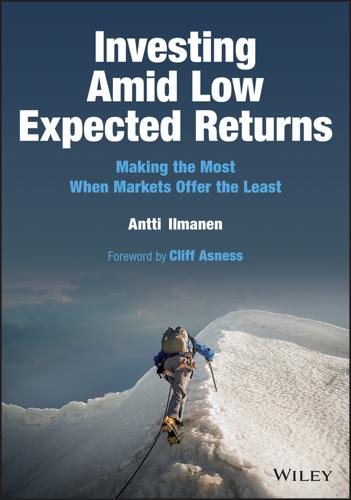
Investing Amid Low Expected Returns: Making the Most When Markets Offer the Least
by
Antti Ilmanen
Published 24 Feb 2022
.; Barton Waring; and Matthew Scanlan (2009), “Five principles to hold onto (even when your boss says the opposite),” Journal of Portfolio Management 35(2), 25–41. Skancke, Martin; Kristin Halvorsen; Tone Hanstad; Karin Thorburn; and Thomas Ekeli (2021), “Climate risk and the Government Pension Fund Global: Managing risks associated with climate change and the green transition,” Report from an expert group appointed by the Ministry of Finance in www.regjeringen.no. Sloan, Richard G. (1996), “Do stock prices fully reflect information in accruals and cash flows about future earnings?” The Accounting Review 71(3), 289–315. Smith, Edgar Lawrence (1924), Common Stocks as Long Term Investments, MacMillan.

The War Below: Lithium, Copper, and the Global Battle to Power Our Lives
by
Ernest Scheyder
Published 30 Jan 2024
The ruling declared that excavation work would not affect the site too much while Du considered the broader issue.37 A few days later, the case grew when Du ruled that Wilbert’s group and Indigenous tribes in the area could join the lawsuit and add their concerns that not only would the mine harm the region’s ecology, but it would also destroy a historical site where Native Americans had been massacred in the nineteenth century. Considering all of this, Du said, would take time, a bad sign for Lithium Americas.38 “The green transition is just all about money. There’s no talks about the environment, or endangered species, or how damaging all this will be for the ecosystem,” said Gary McKinney, a member of the People of Red Mountain tribe. “If a mine like that is to go in, it’ll add to the whole storyline of these mines here in Nevada not caring about Indigenous people or their sacred objects.”39 As the case wound its way through courts, so, too, did the camp’s notoriety.
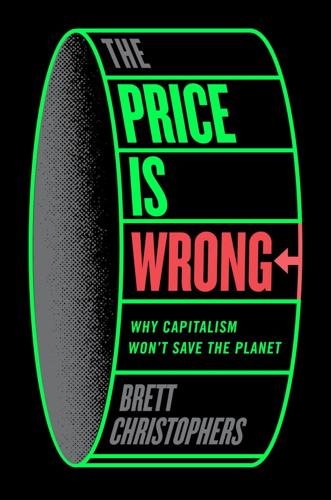
The Price Is Wrong: Why Capitalism Won't Save the Planet
by
Brett Christophers
Published 12 Mar 2024
Mathis, R. Beene and J. Saul, ‘Wind Power’s “Colossal Market Failure” Threatens Climate Fight’, 25 April 2022, bloomberg.com. 19 B. Clark and R. York, ‘Rifts and Shifts: Getting to the Root of Environmental Crises’, Monthly Review 60: 6 (2008), pp. 13–14. 20 M. Wolf, ‘The Market Can Deliver the Green Transition – Just Not Fast Enough’, Financial Times, 22 November 2022. 21 K. Marx, ‘Theories of Surplus Value’, in Karl Marx and Friedrich Engels: Collected Works, Volume 31: Marx 1861–63 (London: Lawrence & Wishart, 1989), pp. 12–16. 22 M. Levine, ‘Electricity Market Rules Did Not Provide a Worthy Opponent for JPMorgan’s Brainpower’, 30 July 2013, dealbreaker.com. 23 J.
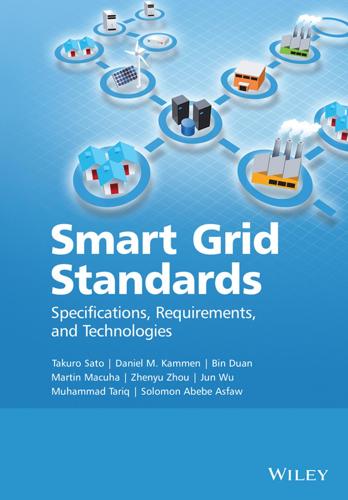
Smart Grid Standards
by
Takuro Sato
Published 17 Nov 2015
The TYNDP package comprises of six regional investment plans (Rglps): Baltic Sea, Continental South East, Continental Central East, Continental South West, Continental Central South, and North Sea [46]. The TYNDP package has also specified the Scenario Outlook and Adequacy Forecast (SO&AF) 2012–2030. In SO&AF 2012–2030, four visions for 2030 have been specified: Slow Progress, Money Rules, Green Transitions, and Green Revolution. These four visions are different enough from each other to capture realistic future pathways and challenges. There will be more than 100 transmission projects of pan-European significance, which total about 52 300 km of Extra High Voltage Routes, and require a total investment of more than €100 billion [46].
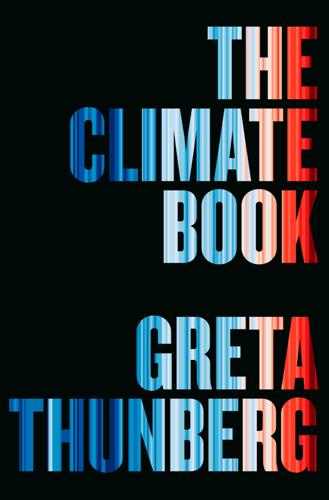
The Climate Book: The Facts and the Solutions
by
Greta Thunberg
Published 14 Feb 2023
According to a team of researchers including Joeri Rogelj of Imperial College, London, just one tenth of Covid-19 stimulus spending, directed toward decarbonization during each of the next five years, would be sufficient to deliver the goals of the Paris Agreement and stop global warming at a level well below 2°C. Globally, the total cost of a green transition would be half of what was spent on stimulus in 2020, and yet, even in the midst of all that spending, the world couldn’t manage to take the deal. In the US alone, the Wall Street Journal noted, a full decarbonization of the power sector would require upfront spending of between $1 trillion and $1.8 trillion – less than one fifth of the cost of the country’s pandemic relief.